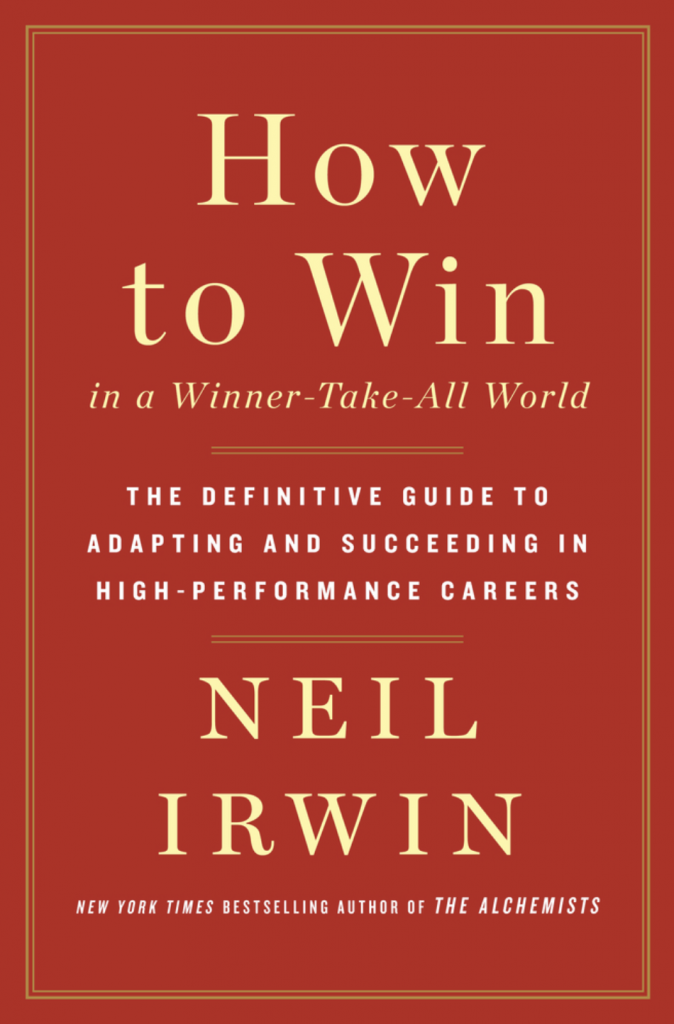Key Quote:
“Good management is essentially like a technology that some organizations have, and others don’t.” Access to this technology creates a winner-take-all cycle in which the best-run firms are most profitable and can therefore offer the best compensation. This, in turn, allows them to recruit the best employees who will contribute to the value of the firm at a high level and therefore maintain the cycle (p. 262). — Neil Irwin
Key Points and Concepts
On Becoming Pareto-Optimal
The twenty-first century economy favors large, complex, technologically advanced firms. Most of these firms are so large that no one person can have a complete understanding of all processes that are essential to the firm. People who can bridge gaps between different areas of expertise, or glue people, have thus become particularly valuable (p. 21).
While good glue people are essential in carrying out multidisciplinary projects, bad glue people can gum up processes and add to the frustrations of bureaucracy without adding value. The key to being a good glue person is to be pareto-optimal. This means that “you cannot improve things on one frontier without making them worse on another frontier” (p. 32).
To become pareto-optimal, one must combine skills that aren’t often found together. The best way to acquire these skills is to gain work experience in different functional areas such as marketing, finance, operations, and software development. It is especially important for high-level managers and C-suite executives to understand the intersections of multiple areas of functionality to communicate strategy throughout a firm (pp. 33-63).
Thinking of a career path in terms of a ladder is not as effective as thinking in terms of a career lattice, in which sideways or even downward moves ultimately lead to a steeper ascent later in one’s career (p. 70).
The Importance of Big Data and Management Economics
The accessibility of big data has made possible a much richer analysis of how individuals work and what makes them successful in a business setting. Individuals should use this data to focus on inputs that are within their control and tend to lead to future success.
Some of these inputs are:
• The sweet spot for work weeks is 40-45 hours. Managers who work more than that, especially during weekends, tend to have less engaged employees.
• Frequent one-on-one meetings between managers and direct reports tend to lead to greater success for both parties over time.
• Building an internal network within one’s organization is essential to future success for both individuals and the firm (pp. 112-113).
The most successful managers are those who make their employees more productive. Defined in this context, productivity is “the amount of economic output attained relative to the time workers put into production.” This definition does not align with working harder or longer hours, but rather developing a system that causes work to create more value over time. Research indicates that effective managers are essential to increasing firm productivity (pp. 135-146).
How Economic Shifts are Shaping the Modern Workplace
Many industries are becoming dominated by a small number of large, highly profitable companies. There are five main reasons for this emerging winner-take-most landscape:
• Intellectual capital, such as patents and software, is becoming more valuable than physical capital, such as real estate and machines.
• Network effects encourage more people to use the same product or service, and this causes the product or service to rise in value for all users.
• Rising market power for large firms has incentivized mergers and acquisitions.
• Government regulations can uphold advantages of large firms while making it harder for smaller firms to enter the market and successfully compete for market share.
• Antitrust authorities are becoming more tolerant of mergers between large firms in markets with little competition (pp. 150-154).
While many prospective employees may set their sights on winner-take-most firms as their target employers, there are not enough available positions offered by these firms to fill the demand of prospective employees. Fortunately, it is not essential to have a job at one of these firms to achieve success. Individuals should look at what different types of firms offer in terms of development opportunities and to think critically about which type of firm could provide a valuable next step in their career lattice. There are three types of firms, and each type offers unique opportunities and challenges:
Winners are large, profitable firms. They offer a steady paycheck and a clear managerial hierarchy to climb. However, they often silo workers in one area which can lead to lack of varied experiences and, therefore, little chance to become pareto-optimal.
Aspirants are startups that ultimately wish to become winners or be acquired by one. In these firms, cash compensation is low, and ambiguity is high. The upside is that employees are not inhibited by bureaucracy, they have the opportunity to gain experience in numerous functional areas and can reap large monetary benefits if the firm is successful.
Afterthoughts are struggling firms. While compensation and morale may be low, the ability to enhance this type of firm’s underappreciated strengths can be both monetarily and psychologically rewarding (pp. 163-164).
No matter the type of firm, nearly all major businesses today are driven by software. While not everyone needs to become a coder to keep up with current employment demands, it is important for all employees to understand how to communicate with those in technological fields (pp. 181-193).
The positions with the most risk of being replaced by artificial intelligence are those that require knowledge of a repetitive, predictable process rather than those which depend upon improvisation and reacting to an ever-changing environment. As a result, many individuals in search of a job unlikely to be displaced by technology will assume highly volatile roles within their field such as an emergency room doctor rather than a radiologist or a courtroom lawyer who represents clients rather than a lawyer that only reviews contracts (p. 195).
Another way to avoid being displaced by technology is to become the automator rather than the automatee. To succeed in this role, it is essential to develop the skill of helicoptering, or “moving up or down in the level of technical detail in any given conversation to match the person you’re speaking with and the demands of the task at hand” (pp. 195-201).
On Deciding Whether to Stay or Go
Jobs should be thought of in 3 one-year stages. In the first year, one must learn the basics. During the second year, one starts to make change and achieves flow. At the end of the third year, one sees the payoff of his or her hard work and feels complete comfort in the role. It is at this point that a decision must be made to seek discomfort in the hopes of gaining new experiences. This is often accomplished by stepping laterally into a same-level role in order to learn a new area of business (p. 75).
When deciding whether to stay with a current employer or move to a new firm, the principles of reciprocity and honesty must be applied. Employers that display more long-term loyalty in terms of benefits, compensation, and internal relationships should be rewarded accordingly with employee commitment. Staying within a firm is not the same as remaining in a role, however, and steps should be taken to widen one’s experiences through lateral movements within a firm (pp. 215-227).
The contracting economy is on the rise, and an increasing number of workers are using this type of work as an opportunity to gain flexibility in the workplace while pursuing differentiated opportunities. Contracting presents challenges such as unsteady salary and benefits, ambiguity in management, a low level of direct contact with colleagues, and no sense of title or recognition. If an individual is comfortable with some level of risk, however, contracting can provide opportunities such as potentially higher wages, flexible work hours, and opportunities
to constantly pursue new and interesting projects (pp. 236-248).

The twenty-first century economy favors large, complex, technologically advanced firms. Most of these firms are so large that no one person can have a complete understanding of all processes that are essential to the firm. People who can bridge gaps between different areas of expertise, or glue people, have thus become particularly valuable.
The positions with the most risk of being replaced by artificial intelligence are those that require knowledge of a repetitive, predictable process rather than those which depend upon improvisation and reacting to an ever-changing environment.
When deciding whether to stay with a current employer or move to a new firm, the principles of reciprocity and honesty must be applied. Employers that display more long-term loyalty in terms of benefits, compensation, and internal relationships should be rewarded accordingly with
employee commitment.
